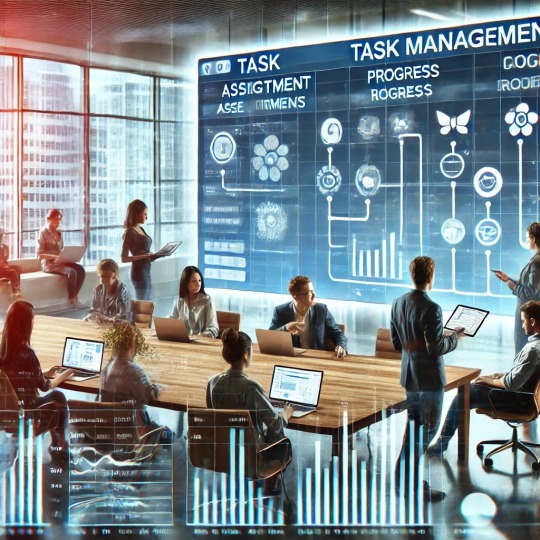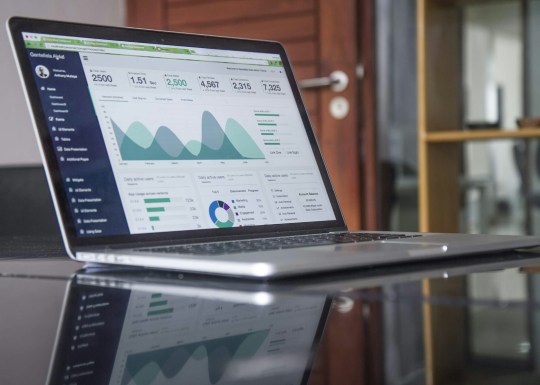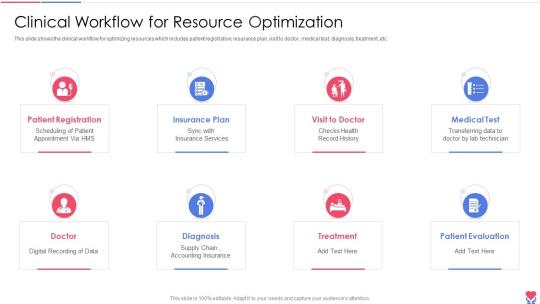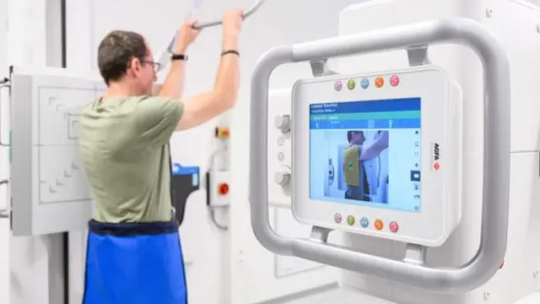#Workflow optimization
Explore tagged Tumblr posts
Text
The Power of Productivity Apps: Streamlining Your Workflow
person using a productivity app In today’s digital age, we have access to an abundance of productivity apps designed to help us manage our tasks, stay organized, and achieve our goals. However, with so many options available, it can be overwhelming to know which apps to choose and how to use them effectively. Choosing the Right Productivity Apps: Identify your needs: Consider the specific…

View On WordPress
3 notes
·
View notes
Text
Unlock Efficiency with PDQ Docs: The Ultimate Document Management Software
In today’s fast-paced world, the way we manage and store documents has evolved dramatically. With businesses and individuals handling vast amounts of information daily, having an effective system for managing documents is no longer a luxury but a necessity. PDQ Docs, the ultimate document management software, offers a comprehensive solution to help you organize, secure, and access your documents effortlessly. This innovative software is designed to streamline document handling, saving time and enhancing productivity for businesses of all sizes.

The Power of PDQ Docs in Document Management
PDQ Docs stands out as the ultimate document management software because it offers an intuitive and user-friendly interface that makes it easy to store, retrieve, and share documents. Gone are the days of sifting through endless paper files or wasting time searching through disorganized digital folders. PDQ Docs allows users to create a centralized digital storage system where all documents can be safely stored and quickly accessed with just a few clicks.
This software is equipped with powerful search functionality, ensuring that finding the right document is a breeze. No more frustrating searches through a clutter of files—PDQ Docs’ advanced search options allow users to locate any document in seconds, boosting efficiency and reducing downtime.
Effortless Integration with Your Existing Workflow
Integrating a new software solution into your existing business processes can often be a challenging task. However, PDQ Docs makes this transition as seamless as possible. Designed to integrate easily with a variety of other tools, PDQ Docs can work in harmony with the systems you already use, such as project management software, CRM tools, and cloud storage platforms.
This level of integration means you don't have to completely overhaul your existing workflow to take advantage of PDQ Docs' powerful document management features. Instead, you can effortlessly incorporate the software into your current processes, enhancing efficiency without disrupting the way your business operates.
A Scalable Solution for Growing Businesses
Growing businesses witness different document management requirements. PDQ Docs is designed with scalability in mind, making it the ultimate document management software for businesses of all sizes. Whether you're a small startup or a large enterprise, PDQ Docs can grow with you, offering flexible storage options and additional features that cater to the evolving needs of your organization.
The software’s scalable design ensures that it remains a valuable asset as your document management requirements expand, allowing you to continue working efficiently without worrying about outgrowing the system.
Conclusion
PDQ Docs stands as the ultimate document management software, providing businesses and individuals with a robust, secure, and efficient solution for organizing and accessing documents. With features like secure storage, advanced search functionality, seamless collaboration, and easy integration with existing systems, PDQ Docs is the key to unlocking greater productivity and simplifying document management. Whether you're looking to streamline your business operations or enhance team collaboration, PDQ Docs is the answer to managing your documents with ease and confidence.
#ultimate document management software#cloud based document management#enterprise document management software#file organization software#document collaboration tools#document scanning software#document indexing software#paperless office solutions#template management#document generation#workflow optimization
1 note
·
View note
Text
Revolutionising Estimations with AI: Smarter, Faster, and More Reliable Predictions
Revolutionising estimations with AI transforms project planning by enhancing accuracy and reducing uncertainty. Unlike traditional methods prone to bias, AI-driven estimations leverage historical data and predictive analytics for more reliable forecasts.
Revolutionising estimations with AI is transforming how teams predict timelines, allocate resources, and improve project planning. Traditional estimation methods often rely on human intuition, which can introduce biases and inconsistencies. AI offers a data-driven approach that enhances accuracy, reduces uncertainty, and allows teams to focus on delivering value. If you’re interested in…
#agile#AI#automation#data-driven decisions#Efficiency#estimations#Forecast.app#forecasting#Jira#LinearB#machine learning#predictive analytics#Project management#risk management#software development#workflow optimization
0 notes
Text
Why I’m Adding Rust to My Tech Arsenal: A Deep Dive Into This Modern Programming Powerhouse
💻 Just started diving into Rust! 🚀 It’s safe, fast, and empowering my workflow like never before. 🔧 Building robust apps with memory safety & zero compromises. 🦀 #RustLang #Programming #TechSkills #Developers #CodeLife #RustLang #Rust
In the ever-evolving world of programming, staying ahead of the curve means embracing tools that redefine the way we write and manage code. Enter Rust, the modern programming language that has quickly gained a reputation for being safe, fast, and reliable. After exploring its capabilities, I’ve decided to integrate Rust into my skill set and workflow, and in this blog post, I’ll share why Rust…
#Modern Development#Programming Languages#Rust Programming#Software Development#Tech Skills#Workflow Optimization
1 note
·
View note
Text
Locate Ticket Management Software: Streamline Workflow Efficiency
Searching for the best solution to locate ticket management software? Streamline your workflow with Norfield Data Products. Our advanced ticket management software is designed to optimize operational efficiency, enhance customer satisfaction, and simplify daily tasks. Whether you're handling service requests, job orders, or resource management, our software ensures real-time tracking, easy accessibility, and seamless performance.
With Norfield, businesses can boost productivity, reduce downtime, and manage tickets effortlessly with a user-friendly interface. The platform caters to various industries, offering custom features like automated updates, reporting tools, and centralized ticket logs to improve accountability and accuracy.
Say goodbye to lost or mishandled tickets! Norfield Data Products' ticket management system helps you locate, manage, and resolve tickets efficiently, saving both time and resources. Stay ahead of your competitors by adopting a proven solution that delivers results.
Explore the leading ticket management software at Norfield today to simplify your operations and keep your team on track.
#locate ticket management software#ticket management system#ticket management software#Norfield Data Products#workflow optimization#real-time tracking#operational efficiency#resource management
0 notes
Text
Effective paperwork management is crucial in the healthcare industry, ensuring that patient information is accurate and easily accessible. Training staff at healthcare business in Casper, Wyoming, can significantly improve how paperwork is handled. Providing staff with the right tools and resources allows them to become more efficient in managing documents, ultimately leading to better patient care. Regular training sessions can help employees stay updated on best practices and new technologies that streamline paperwork processes.
0 notes
Text
Optimized Task Management for Enhanced Team Collaboration and Productivity
Task management systems streamline project workflows by enabling teams to assign, prioritize, and track tasks effectively. These platforms offer features like progress tracking, deadline reminders, and collaborative tools that ensure timely completion of projects. With clear visualizations of goals and responsibilities, task management solutions promote accountability and enhance team communication. Businesses can boost productivity, minimize delays, and achieve operational excellence by centralizing task organization.
More info: https://ahalts.com/products/hr-management

#Task Management#Project Collaboration#Task Tracking Software#Productivity Tools#Team Management#Workflow Optimization#Task Prioritization#Deadline Tracking#Project Organization
0 notes
Text

#Penny's Business Services | Business Automation Training & Support#Remote Administrative Support Specialist#Entrepreneur#Business Automation#Solopreneur#Small Business Tools#Workflow Optimization#Productivity Hacks#Digital Nomad Life#Time Management#Virtual Assistant
0 notes
Text
#voice technology#crm efficiency#customer relationship management#business solutions#workflow optimization#technology integration#voice activated crm#practical guide#customer engagement#productivity tools
1 note
·
View note
Text
Leading Marketing Operations Service Provider in New Jersey – Sigur Solutions
Welcome to Sigur Solutions, your top choice for comprehensive marketing operations services in New Jersey. Situated at Brunswick, NJ, we specialize in optimizing your marketing efforts to drive efficiency, maximize ROI, and achieve sustainable growth for your business.
Enhance Your Marketing Operations
At Sigur Solutions, we understand that effective marketing operations are the backbone of successful campaigns. Our dedicated team of experts offers a range of tailored services to streamline your marketing processes and deliver exceptional results:
Campaign Management: From initial strategy development to execution and performance analysis, we ensure your campaigns are meticulously planned and flawlessly executed.
Workflow Optimization: We analyze and streamline your marketing workflows to improve efficiency, reduce costs, and enhance overall productivity.
Technology Integration: Leverage the latest marketing technologies and platforms to automate processes, manage data effectively, and optimize your marketing stack.
Why Choose Sigur Solutions for Your Marketing Operations?
Expertise and Experience: With years of industry experience, our team brings extensive knowledge and best practices to optimize your marketing operations.
Customized Solutions: We tailor our services to fit your unique business needs, ensuring a personalized approach that aligns with your goals.
Proven Results: We have a track record of delivering measurable improvements in efficiency, effectiveness, and ROI for our clients.
Partner with Us Today
Ready to take your marketing operations to the next level? Contact Sigur Solutions at [phone number] or visit our website at [URL] to learn more about our comprehensive marketing operations services and schedule a consultation. Discover how we can transform your marketing efforts into a strategic advantage for your business.
Contact us at +1 732-374-9292
Address: 1040 D, Orchard St, North Brunswick Township, NJ 08902
#marketing operations services New Jersey#campaign management#workflow optimization#technology integration#Sigur Solutions
0 notes
Text
Task Management Techniques for Project Managers: Streamlining Workflow and Meeting Deadlines
Task management lies at the core of successful project management. For project managers, efficiently handling tasks, deadlines, and resources can mean the difference between project success and failure. In this article, we'll explore various task management techniques that project managers can employ to streamline workflow, enhance productivity, and meet project deadlines effectively.
Understanding Task Management
Task management encompasses the processes, tools, and techniques used to plan, organize, assign, and track tasks within a project. It involves prioritizing tasks, allocating resources, and ensuring that deadlines are met. Effective task management is essential for keeping projects on track and achieving desired outcomes.
Challenges Faced by Project Managers
Project managers often encounter various challenges in task management, including unclear priorities, resource constraints, and communication breakdowns. Poor task management can lead to missed deadlines, budget overruns, and compromised project quality. It's crucial for project managers to address these challenges proactively to ensure project success.
Key Components of Effective Task Management
Effective task management involves several key components, including prioritization techniques, time management strategies, and communication tools. By mastering these components, project managers can streamline workflow and optimize project outcomes.
Streamlining Workflow
Streamlining workflow begins with setting clear goals and objectives for the project. Project managers should break down tasks into smaller, manageable components and assign them to the appropriate team members based on skills and availability. By dividing work effectively, project managers can ensure that tasks are completed on time and within budget.
Utilizing Technology for Task Management
Technology plays a vital role in modern task management. Project managers can leverage task management software to create, assign, and track tasks efficiently. When choosing task management tools, project managers should look for features such as task prioritization, deadline reminders, and collaboration capabilities to enhance team productivity.
Effective Time Management Strategies
Time management is critical for project success. Project managers can employ various time management strategies, such as time blocking and the Pomodoro Technique, to improve focus and productivity. Setting realistic deadlines and regularly reviewing progress are also essential for managing time effectively.
Communication and Collaboration
Communication forms the foundation of effective task management. Project managers should establish clear channels of communication and utilize project management platforms to facilitate collaboration among team members.Consistent check-ins and updates ensure everyone stays on the same page.
Tracking and Monitoring Progress
Tracking progress is essential for identifying potential bottlenecks and addressing issues promptly. Project managers can use progress tracking tools to monitor task status, identify dependencies, and allocate resources effectively. Regular check-ins with team members provide opportunities to discuss progress and address any concerns.
Delegating Tasks
Delegating tasks allows project managers to leverage the skills and expertise of team members effectively. By identifying tasks suitable for delegation and empowering team members to take ownership, project managers can distribute workload evenly and maximize efficiency.
Handling Project Delays
Despite careful planning, project delays can occur due to unforeseen circumstances or unexpected challenges. Project managers should be proactive in identifying the causes of delays and implementing corrective actions to minimize their impact on project timelines.
Managing Stakeholder Expectations
Managing stakeholder expectations is crucial for project success. Project managers should communicate project progress and potential delays transparently, setting realistic expectations and ensuring stakeholders are informed throughout the project lifecycle.
Measuring Success
Measuring success involves tracking key performance indicators (KPIs) related to task management, such as project completion rate and adherence to deadlines. Celebrating achievements and lessons learned helps reinforce positive outcomes and drive continuous improvement.
Continuous Improvement
Continuous improvement is essential for evolving task management processes and optimizing project performance. Project managers should seek feedback from team members, stakeholders, and project sponsors to identify areas for improvement and implement iterative changes.
Conclusion
Effective task management is essential for project managers tasked with streamlining workflow and meeting project deadlines. By employing prioritization techniques, time management strategies, and communication tools, project managers can optimize task management processes and drive project success. Continuous improvement and proactive problem-solving are key to overcoming challenges and delivering successful projects.
FAQs
What are some common challenges in task management for project managers? Ans: Common challenges include unclear priorities, resource constraints, and communication breakdowns.
How can project managers streamline workflow effectively? Ans: Project managers can streamline workflow by setting clear goals, breaking down tasks, and assigning them to the right team members.
What role does technology play in task management? Ans: Technology, such as task management software, helps project managers create, assign, and track tasks efficiently.
Which time management techniques work well for project managers? Ans: Time blocking, the Pomodoro Technique, and setting realistic deadlines are effective time management strategies.
How important is communication in task management? Ans: Effective communication is crucial for keeping team members aligned and informed, facilitating collaboration, and addressing challenges proactively.
#Task Management#Project Management#Time Management#Productivity#Task Tracking#Task Prioritization#Workflow Optimization#Team Collaboration#Deadline Management#Task Delegation#Task Organization#Task Efficiency#Task Automation#Task Software#Task Planning
0 notes
Text
Optimizing Your Workflow with Denoise AI: Say Goodbye to Noise
The Importance of Denoising in Video Optimization When it comes to video production, noise can be a major issue that affects the overall quality of your content. Whether you’re filming in a busy street or a crowded room, unwanted noise can distract viewers and take away from the message you’re trying to convey. This is where denoising technology comes in to save the day. Denoising in video…

View On WordPress
#Artificial Intelligence#automatic noise removal#denoise ai#denoising software#enhance post-production#improve video quality#noise reduction tool#seamless editing#video noise removal#workflow optimization
0 notes
Text
PDQ Docs: The Ultimate Document Management Software for Modern Businesses
In today’s fast-paced business environment, managing documents efficiently is crucial to maintaining productivity, ensuring compliance, and streamlining workflows. Companies are constantly seeking tools that can simplify the document management process while maintaining accuracy and consistency. PDQ Docs is the ultimate document management software that offers businesses a robust solution for organizing, automating, and securing their documents. This powerful software enables organizations to manage their documents with ease, improving overall efficiency and reducing the risk of errors.

What Makes PDQ Docs the Ultimate Document Management Software?
PDQ Docs stands out as the ultimate document management software due to its comprehensive features and user-friendly interface. Designed to meet the needs of businesses of all sizes, PDQ Docs provides a central platform to store, organize, and manage all types of documents. With its cloud-based system, businesses can easily access documents from anywhere, on any device, ensuring seamless collaboration across teams and locations.
The software allows businesses to automate document creation, eliminating the need for manual data entry and reducing the risk of human error. Whether it’s contracts, invoices, or reports, PDQ Docs allows users to generate documents with pre-set templates, automatically populating them with relevant data. This not only speeds up document creation but also ensures consistency across all documents, reflecting the organization’s professional standards.
Simplified Workflow Automation
One of the primary benefits of PDQ Docs as the ultimate document management software is its ability to automate workflows. In today’s business landscape, where time is of the essence, manual document management processes can slow down productivity. PDQ Docs solves this problem by automating routine tasks, such as document creation, data entry, and document approval processes.
Enhanced Collaboration and Document Sharing
Collaboration is a key component of modern business operations, and PDQ Docs excels in enabling teams to work together efficiently. The ultimate document management software provides a centralized document repository, where team members can easily access, review, and edit documents in real-time. This reduces the risk of version control issues and ensures that all team members are working from the most up-to-date version of a document.
Furthermore, PDQ Docs allows users to share documents securely with clients, vendors, or other stakeholders. The software ensures that all shared documents are protected with encryption, providing businesses with peace of mind that their sensitive information is secure. With robust access control features, businesses can also restrict who can view or edit documents, ensuring that only authorized individuals have access to critical information.
Seamless Integration with Existing Systems
Another standout feature of PDQ Docs is its seamless integration with a variety of third-party software solutions. Whether your business uses accounting, customer relationship management (CRM), or enterprise resource planning (ERP) software, PDQ Docs can integrate with these systems to provide a cohesive solution for managing documents. This integration reduces the need for manual data entry, ensuring that all information across platforms remains synchronized and up-to-date.
#ultimate document management software#seamlessly navigate#template management#document generation#document cloning#document renaming#document sending#workflow optimization#efficient document generation#document preparation#enterprise document management#workflow automation#business process management#document archiving#document automation tools#secure file management
0 notes
Text
The Case for Standardising Ways of Working in Software Delivery Teams
What Are Ways of Working? Before diving into standardisation, let’s define “ways of working.” In the context of software development or digital product development, ways of working refers to the methods, practices, and processes teams use to collaborate, communicate, and execute tasks. It encompasses frameworks, communication protocols, workflows, tools, and decision-making approaches that guide…
#agile processes#business value#collaboration in teams#cross-team collaboration#digital product development#feature teams#operational excellence#platform teams#process standardization#risk mitigation#scalability in software development#software delivery processes#software delivery teams#software development ROI#software quality#standardizing ways of working#support teams#team efficiency#team structure#workflow optimization
0 notes
Text
Integrating Lab Analyzers: Best Practices for Seamless Operations

In the realm of laboratory operations, lab analyzers interfacing plays a crucial role in ensuring smooth and efficient workflows. Laboratories rely on interfacing solutions to seamlessly connect various analytical instruments and systems, enabling automated data transfer and streamlined processes. Let's delve into some best practices for integrating lab analyzers to optimize operations.
Automated transfer of data between lab analyzers and information systems is essential for reducing manual errors and enhancing efficiency. Leveraging interfacing solutions that support automated data exchange enables real-time transmission of test results, eliminating the need for manual data entry and reducing turnaround times. By automating data transfer, laboratories can improve accuracy, minimize delays, and enhance overall productivity.
Workflow optimization is another key aspect of integrating lab analyzers effectively. By designing workflows that leverage interfacing solutions to their full potential, laboratories can streamline sample processing, result reporting, and data management processes. This includes configuring automated workflows, setting up rule-based result validation, and implementing batch processing capabilities to maximize throughput and minimize bottlenecks.

Ensuring compatibility between lab analyzers and interfacing solutions is crucial for seamless integration. Before deploying interfacing solutions, laboratories must conduct thorough compatibility testing to verify that the software or middleware is compatible with the analytical instruments and information systems in use. This involves testing communication protocols, data formats, and connectivity options to ensure smooth and reliable operation.
Establishing robust integration protocols is essential for maintaining interoperability and data integrity across different systems and platforms. Standardizing communication protocols, data exchange formats, and error handling procedures facilitates seamless integration and ensures consistent performance across heterogeneous environments. By adhering to established integration protocols, laboratories can minimize compatibility issues and enhance system reliability.
In conclusion, integrating lab analyzers requires careful consideration of interfacing solutions, automated transfer, workflow optimization, compatibility testing, and integration protocols. By adopting best practices in these areas, laboratories can achieve seamless operations, improve efficiency, and deliver timely and accurate test results. Embracing innovative interfacing solutions and optimizing workflows are essential steps toward realizing the full potential of lab analyzer integration in modern laboratory settings
#Interfacing Solutions#Automated Transfer#Workflow Optimization#Compatibility Testing#Integration Protocols
0 notes
Text
Radiology Machines Interfacing: Streamlining Imaging Processes

In the fast-paced world of radiology, efficient Radiology Machines Interfacing and PACS (Picture Archiving and Communication System) are essential for streamlining imaging processes and improving diagnostic outcomes. Let's delve into how these technologies facilitate seamless integration, optimize workflow, and enhance diagnostic efficiency.
Seamless Integration: The integration of radiology machines with PACS enables seamless integration of imaging data into a centralized system. This integration eliminates the need for manual data entry and facilitates the automatic transfer of images and patient information, reducing the risk of errors and ensuring data accuracy. With seamless integration, radiologists can access patient images and data from any location within the healthcare facility, enhancing collaboration and efficiency.
Image Management: Effective image management is crucial for organizing and storing large volumes of medical images generated by radiology machines. PACS provides robust tools for storing, retrieving, and managing images, allowing radiologists to quickly access relevant patient data during diagnosis and treatment planning. Advanced image management capabilities ensure that images are securely archived and readily accessible when needed, improving workflow efficiency and patient care.
Workflow Optimization: Radiology Machines Interfacing and PACS streamline imaging processes by optimizing workflow and reducing manual tasks. With automated workflows and intelligent routing, radiology images are routed to the appropriate radiologist for interpretation, ensuring timely diagnosis and treatment planning. Workflow optimization also minimizes unnecessary delays and bottlenecks, allowing healthcare providers to deliver prompt and efficient care to patients.

Real-time Access: PACS enables real-time access to radiology images and patient data, empowering healthcare providers to make informed decisions quickly. Radiologists can access images instantly from any location, enabling remote interpretation and consultation, particularly beneficial in emergency situations or when expert opinions are required. Real-time access to imaging data enhances diagnostic accuracy and facilitates timely interventions, ultimately improving patient outcomes.
Diagnostic Efficiency: By streamlining imaging processes and providing rapid access to radiology images, Radiology Machines Interfacing and PACS contribute to diagnostic efficiency. Radiologists can efficiently review and interpret images, leading to faster diagnoses and treatment decisions. Additionally, advanced features such as image enhancement and 3D reconstruction tools further enhance diagnostic accuracy, enabling radiologists to detect and analyze abnormalities with precision.
In conclusion, Radiology Machines Interfacing and PACS play a vital role in streamlining imaging processes and enhancing diagnostic efficiency in radiology departments. Through seamless integration, robust image management, workflow optimization, real-time access, and improved diagnostic efficiency, these technologies empower healthcare providers to deliver high-quality care and improve patient outcomes.
0 notes